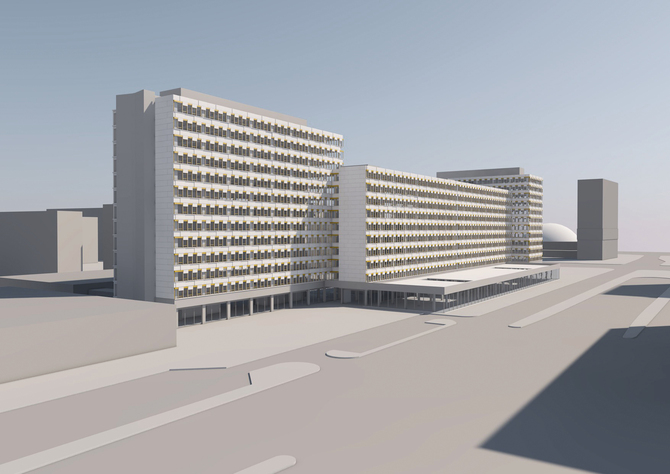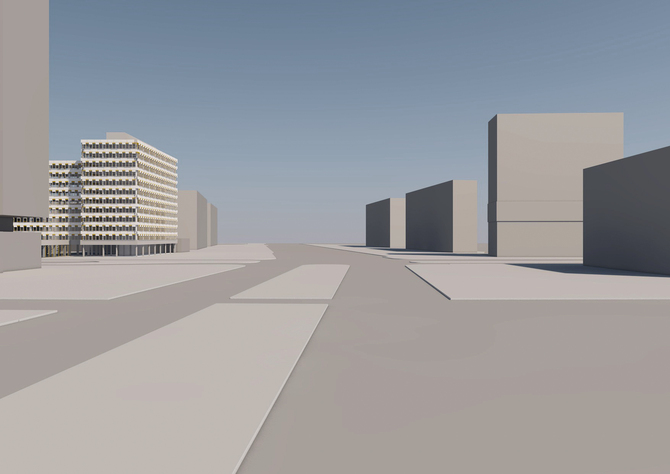The "House of Statistics" (1968-1970) stands in Berlin in a prominent urban location north of Alexanderplatz. Together with the "House of Travel" and the "House of the Teacher," it forms the prelude to the Karl-Marx-Allee that begins here. The sheer size as well as the characteristic concrete facade have inscribed the building into the collective memory of the city - beyond the question of whether one might find the existing building "beautiful" or "ugly." However, the building shares its fate with many buildings of the 1960s and 1970s: it has been neglected until the preservation of the existing facade is hardly feasible, let alone economically justifiable.
Therefore, a new facade is proposed, which should give the building an adequate face with contemporary structural means. This should neither be an imitation of the old appearance, nor should it banish any trace of the existing building from the memory of the place. Thus, the new building envelope is understood as an interpretation of the guiding ideas of the existing façade, translated and continued in a new material and a new construction system. The plasticity of the facade is not achieved by formally added ornaments as in the existing building, but emerges from the anatomical elements of the façade and the superimposed system of its tectonic structure. Due to the choice of materials, the new shell of white and golden anodized aluminum will appear more delicate and elegant than the coarse existing façade, and its time of origin will also be unmistakably apparent. Nevertheless, its basic appearance will be reminiscent of its vanished predecessor - just as one sometimes thinks one recognizes the grandfather or grandmother in the face of a grandchild.
Berlin 2018
Fthenakis Ropee Architektenkooperative




